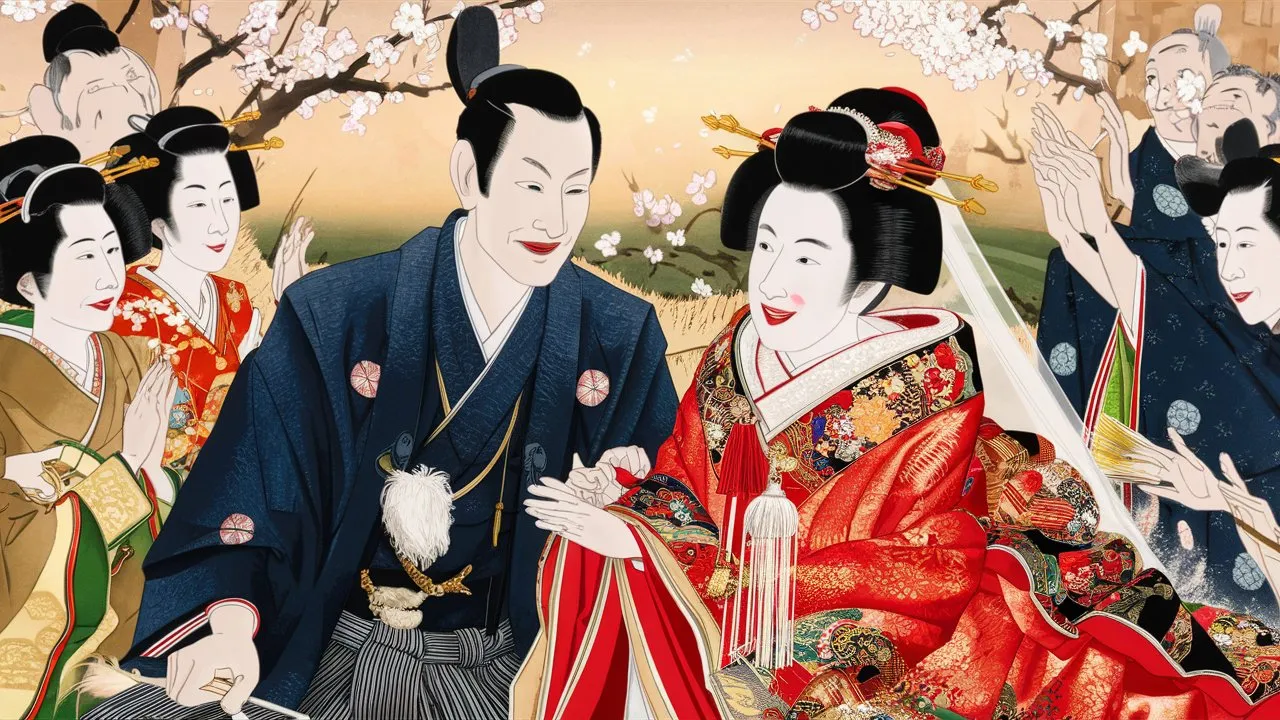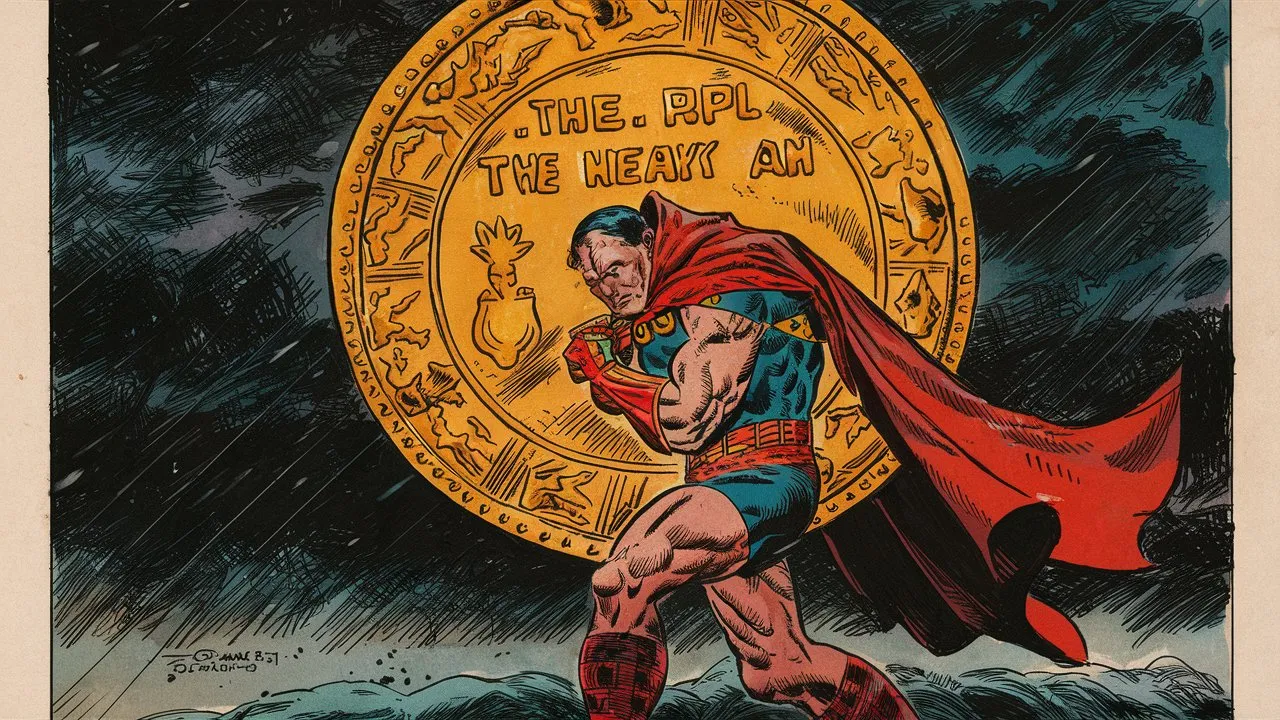
SOURCE/FUENTE PIXABAY
SOURCE/FUENTE PIXABAY
SOURCE/FUENTE PIXABAY

El mezquino lleva en sí su propio infierno.
George Herbert
Entre las propuestas de la comunidad Humanitas me he atrevido a abordar, de alguna forma, la invitación a reflexionar sobre “el buen vivir, la salud y la cultura de paz”. De las preguntas guía planteadas, abordaré cuestiones relacionadas con el “buen vivir” y “una mejor salud”, destacando a la generosidad como una fuente de felicidad al alcance de cualquiera.
Hace tiempo que tengo la idea de compartir con la comunidad los apuntes que recogí en el “Congreso Mundial en Psicología y Psicoterapia 3.0” celebrado este pasado mayo en Puebla (México).
Entre los ponentes se encontraba el psicólogo Daniel Gilbert. Uno de los científicos con más “seguidores” del planeta, lo cual no es de extrañar. A su evidente valía, su fama está ligada a la actual moda del estudio de la “toma de decisiones”. Junto con otros científicos como Daniel Kahneman (Premio Nobel. 2002), Amos Tversky o Richard Thaler (Premio Nobel. 2017), no se ha limitado a estudiar nuestros “errores” y sesgos en el momento de la toma de una decisión, sino que pertenece a una generación de científicos sociales, de élite, empeñados en estudiar la manera de influir en nuestras decisiones (por nuestro bien).
El interés de su conferencia (Daniel Gilbert. México. 2024) radicaba tanto en la calidad intelectual del ponente como por el tema tratado: la felicidad.

The miser carries his own hell within himself.
George Herbert
Among the proposals of the Humanitas community, I have dared to address, in some way, the invitation to reflect on "living well, health, and a culture of peace" (“el buen vivir, la salud y la cultura de paz”). From the guiding questions posed, I will address issues related to "living well" and "better health," highlighting generosity as a source of happiness within everyone's reach.
I have long had the idea of sharing with the community the notes I collected at the "World Congress on Psychology and Psychotherapy 3.0" held this past May in Puebla, Mexico.
One of the speakers was psychologist Daniel Gilbert. One of the most "followed" scientists on the planet, which is not surprising. In addition to his evident worth, his fame is linked to the current trend of studying "decision-making."Along with other scientists such as Daniel Kahneman (Nobel Prize. 2002), Amos Tversky or Richard Thaler (Nobel Prize. 2017), he has not limited himself to studying our "mistakes" and biases when making a decision, but belongs to a generation of social scientists, elite, committed to studying how to influence our decisions (for our sake).
The interest of his conference (Daniel Gilbert. Mexico. 2024) lay both in the intellectual quality of the speaker and the topic addressed: happiness.



La felicidad
El siguiente texto tiene su origen en esta conferencia y toma como base los apuntes personales tomados durante la misma. No puedo seguir sin advertir que, como apuntes personales, pueden contener algún error que sólo es responsabilidad mía. Además, el texto incluyendo fuentes propias, alguna explicación y opinión adicional y algún ejemplo de mi cosecha por lo que las opiniones expuestas son sólo mías y de mi responsabilidad. Por tanto, esta publicación es un acercamiento crítico a las ideas expresadas por D. Gilbert.

Happiness
The following text has its origin in this conference and is based on the personal notes taken during it. I cannot continue without warning that as personal notes they may contain some errors, which are solely my responsibility. In addition, the text includes own sources, additional explanations and opinions, and some examples of my own making, so the opinions expressed are solely mine and my responsibility. Therefore, this publication is a critical approach to the ideas expressed by Mr. Gilbert.


FOTOGRAFÍA DE MI PROPIEDAD TOMADA CON MI TELÉFONO MÓVIL REDMI A2; PHOTO OF MY PROPERTY TAKEN WITH MY REDMI A2 CELL PHONE.

La felicidad: lo que tu madre no te contó
En la exposición, titulada “La felicidad: lo que tu madre no te contó”, se abordó la cuestión del secreto de la felicidad. Los científicos sociales llevan estudiando la felicidad durante las últimas cinco décadas mediante encuestas y métodos experimentales o cuasi-experimentales; es decir, con muchas de las herramientas que usan los científicos de otros campos para estudiar otros fenómenos, como por ejemplo la/s causa/s del cáncer. Este es el sustento de las afirmaciones hechas durante la ponencia por D. Gilbert.
Comparando el saber popular con lo que dice el saber de la ciencia, D. Gilbert trató de mostrar qué cosas hay que hacer y qué cosas no hay que hacer para ser feliz.
-¿Qué opina la madre de D. Gilbert sobre la felicidad?- Es de la opinión de que el matrimonio, el dinero y los hijos dan la felicidad. De tal forma, que estos tres puntos fueron la columna vertebral de la exposición.
Aclaro, que los estudios en los que se basan los “hechos” presentados son estadísticos. Hablan de una población, de lo general, pero no necesariamente son verdad para todos los miembros de una población. Por ejemplo, el tabaco acorta la vida, lo que no necesariamente significa que yo, no fumador, viva más que mi vecino fumador. Como población, los no fumadores vivimos más, pero puede haber casos individuales en los que esta “verdad” no se cumpla.
Vamos con el tema: encontrar a alguien, ganar dinero y tener una familia, ¿Dan la felicidad?



El matrimonio
Enamorarse y compartir la vida con una persona
Lo que nos cuentan las estadísticas es que la gente casada, no las parejas que viven juntas, es más feliz. En orden de mayor a menor felicidad el ranking es el que sigue: personas casadas, que viven juntos, solteros/as, personas divorciadas y, en último lugar, las personas separadas.
Las personas casadas gozan de mejor salud, más esperanza de vida, más dinero por persona, más sexo y lo disfrutan más. Si comparamos los peores años de las personas casadas con los mejores años de las personas no casadas, las personas casadas es más feliz en sus peores años que las no casadas en sus mejores años.
Pero, quizás, la gente casada es más feliz por otros motivos. Por ejemplo, quizás se case la gente más feliz. Es decir, que los/as casados/as ya eran más felices antes del matrimonio.
Sin embargo, sabemos, o al menos los estudios así lo afirman, que la felicidad aumenta con el matrimonio. Este aumento de la felicidad se mantiene durante 10 o 15 años.
Sin embargo, se da la paradoja de que después de un divorcio también la gente es más feliz. La conclusión de D. Gilbert, que puede resolver esta paradoja, sería que no es cualquier matrimonio el que da la felicidad. La felicidad la da un “buen matrimonio”. ¿Qué es un buen matrimonio? Un buen matrimonio, y un buen predictor de felicidad, es aquel en la que ambos consortes contestan de forma afirmativa a la siguiente pregunta: ¿Es tu cónyuge tu mejor amigo/a?

Happiness: what your mother didn't tell you
In the presentation titled* "Happiness: what your mother didn't tell you,"* the issue of the secret to happiness was addressed. Social scientists have been studying happiness for the past five decades through surveys and experimental or quasi-experimental methods; that is, using many of the tools that scientists in other fields use to study other phenomena, such as the cause(s) of cancer. This is the basis for the claims made during the presentation by Mr. Gilbert.
Comparing common knowledge with what science says, Mr. Gilbert tried to show what things need to be done and what things should not be done to be happy.
What does Mr. Gilbert's mother think about happiness? - Well, she is of the opinion that marriage, money, and children bring happiness. As such, these three points were the backbone of the presentation.
I clarify that the studies on which the "facts" presented are based are statistical. They talk about a population, about the general, but they are not necessarily true for all members of a population. For example, smoking shortens life, which does not necessarily mean that I, a non-smoker, will live longer than my smoking neighbor. As a population, non-smokers live longer, but there may be individual cases where this "truth" does not hold true.
Let's get to the topic: finding someone, making money, and having a family, do they bring happiness?

Marriage
Falling in love and sharing life with someone
Statistics tell us that married people, not couples living together, are happier. In order of most to least happy, the ranking is as follows: married individuals, cohabiting couples, singles, divorced individuals, and lastly, separated individuals.
Married individuals have better health, longer life expectancies, more money per person, more sex, and enjoy it more. If we compare the worst years of married individuals with the best years of unmarried individuals, married individuals are happier in their worst years than unmarried individuals in their best years.
But perhaps, married people are happier for other reasons. For example, maybe happier people get married. That is, married individuals were already happier before marriage.
However, we know, or at least studies claim, that happiness increases with marriage. This increase in happiness is sustained for 10 to 15 years.
However, there is the paradox that after a divorce people are also happier. Mr. Gilbert's conclusion, which may resolve this paradox, would be that not any marriage brings happiness. Happiness comes from a "good marriage."What is a good marriage?A good marriage, and a good predictor of happiness, is one in which both spouses answer affirmatively to the following question: Is your spouse your best friend?



Hijos
Es un dichoso infortunio el no tener hijos.
Eurípides.
Según la “ciencia”, la cuestión de los hijos es sencilla, tener hijos no asegura la felicidad, y en algunos casos puede llegar a convertirse en un infierno.

Chidren
It is a fortunate misfortune not to have children.
Euripides.
According to "science," the issue of having children is simple, having children does not guarantee happiness, and in some cases it can even become a hell.



Dinero
Este punto será más extenso, pues me parece de más interés en relación al tema del “buen vivir”.
La relación del dinero con la felicidad debería ser evidente. La gente con dinero enferma menos, tiene mejor asistencia médica cuando lo necesita, no pasa hambre, ni frío, tiene buena ropa, buen calzado, mejor formación académica, etc.
Está bien, no llamemos felicidad a las comodidades que son accesibles con el dinero. En todo caso, no hay duda de que el dinero ahorra muchos problemas y sufrimientos. No llames felicidad a estos bienes y servicios que nos proporciona el dinero, llámalo buen vivir, o de otra forma diferente. Como lo nombres es indiferente en el contexto de esta publicación.
La ciencia dice, como gusta decir ahora, que la gente rica es más feliz. Pero llega un momento en el que más dinero no da más felicidad. Enlace
Es más, el tiempo gastado en ganar más dinero es tiempo restado a actividades que nos hacen felices. Por tanto, si llegamos a un punto en el que ganar más dinero no añade más felicidad a nuestras vidas, quitarle tiempo a la familia o a los amigos, en términos de felicidad ya no es rentable.
Llegado a ese punto, D. Gilbert plantea que lo más rentable para la felicidad no es invertir el tiempo en ganar más dinero. Lo rentable es ser generoso y, en lugar de comprar cosas, dedicarnos a comprar experiencias:
Ser generoso da felicidad: dar es mejor que recibir.
Invertir más en experiencias y menos en cosas proporcina más felicidad.

Money
This point will be more extensive, as it seems to me of more interest in relation to the theme of "living well".
The connection of money with happiness should be evident. People with money get sick less, have better medical assistance when needed, don't go hungry or cold, have good clothing, good footwear, better education, etc.
Okay, let's not call comforts that are accessible with enough money happiness. In any case, there is no doubt that money saves a lot of problems and suffering. Don't call these goods and services that money provides us happiness, call it living well, or in a different way, this is indifferent in the context of this post.
Science says, as people like to say now, that rich people are happier. But there comes a point where more money doesn't bring more happiness. Link
Furthermore, time spent making more money is time taken away from activities that make us happy. Therefore, if we reach a point where earning more money doesn't add more happiness to our lives, taking time away from family or friends, in terms of happiness, is no longer profitable.
Once we reach that point, D. Gilbert suggests that the most profitable thing for happiness is not investing time in making more money. What is profitable is being generous and, instead of buying things, dedicating ourselves to buying experiences:
Being generous brings happiness: giving is better than receiving.
Investing more in experiences and less in things provides greater happiness.

 |  |  |
|---|
SOURCE/FUENTE PIXABAY
SOURCE/FUENTE PIXABAY

Generosidad
Existe una gran cantidad de pruebas que confirman que la generosidad es una fuente de felicidad. Pero, si no he entendido mal la intervención de nuestro experto, los argumentos de D. Gilbert pueden ser engañosos.
Sin negar que el dinero facilita mucho la vida. La generosidad es una buena “inversión”, no sólo cuando se llega a un determinado nivel de riqueza. Es una buena “inversión” siempre, también para las personas con menos recursos económicos. La generosidad proporciona felicidad a quien la practica.
Caracterizaremos el comportamiento generoso como aquel que beneficia a otros/as y, al mismo tiempo, es costoso para el que lo/la practica. No se trata solamente de dar, consiste en dar sin esperar una recompensa a cambio. Ni mejorar la imagen personal, ni favorecer a amigos o conocidos esperando una recompensa posterior, es decir, cuando use el término de generosidad está descartado el intercambio de favores, o la búsqueda de un bien personal, etc.
Mi opinión es la siguiente, independientemente de la riqueza personal, la generosidad está asociada a la felicidad.
Esto puede parecer una paradoja:
El comportamiento generoso es costoso, ya que implica la inversión de los propios recursos en beneficio de otros. Sin embargo, parece que estamos “programados” para ser felices cuando somos generosos. En 1989 el economista James Andreoni propuso el término "warm glow", que explicaba la conducta generosa estaba impulsada por la recompensa emocional que recibe la persona que realiza la actividad altruista. La recompensa no sería externa, sino interna. Es la felicidad y el bienestar que produce el acto generoso lo que nos empuja a realizarlo.
En 2017, llegaba la gran prueba sobre como la generosidad es parte de la “naturaleza” humana. La revista Nature publicaba un paper titulado “A neural link between generosity and happiness” de Soyoung Q. Et al. Un equipo de científicos que, utilizando imágenes de resonancia magnética, (de)mostró el vínculo entre procesos neurales, la generosidad y la felicidad.
Las conclusiones de este estudio son simples, la generosidad proporciona más felicidad que las acciones realizadas buscando una recompensa externa. La importantes implicaciones de este estudio, según este equipo de investigación, serían las siguientes:
Nuestro estudio aporta pruebas conductuales y neuronales que respaldan el vínculo entre generosidad y felicidad. Nuestros resultados sugieren que, para que una persona alcance la felicidad a partir de un comportamiento generoso, es necesario que las regiones cerebrales implicadas en la empatía y la cognición social anulen los motivos egoístas en las regiones cerebrales relacionadas con la recompensa. Estas conclusiones tienen importantes implicaciones no sólo para la neurociencia, sino también para la educación, la política, la economía y la salud. Enlace
En definitiva, esta investigación, aportaba una gran evidencia sobre la relación entre la felicidad y la generosidad. Sólo los actos auténticamente generosos, en los que los motivos egoístas están sofocados, nos aportan felicidad.
Ser generoso está al alcance de cualquiera. No hace falta dinero para mostrarse generoso. Un ejemplo es la parábola del buen samaritano. Alguien se detiene en el camino para prestar de forma desinteresada su ayuda a un desconocido.
Como señalan los autores del estudio, esta evidencia es un desafío para la economía del comportamiento (Daniel Kahneman y Amos Tversky) que supone que cualquier comportamiento económico racional supone siempre la búsqueda máxima del propio beneficio. Es muy probable que Daniel Kahneman y Amos Tversky nunca hayan visto Ciudano Kane de Orson Wells. O que no hayan entendido nada de esta historia sobre un hombre de éxito aplastado por su propio vacío.

Generosity
There is a wealth of evidence confirming that generosity is a source of happiness. But, if I have not misunderstood the intervention of our expert, Mr. Gilbert's arguments can be misleading.
Not denying that money greatly facilitates life. Generosity is a good "investment", not only when reaching a certain level of wealth. It is a good "investment" always, even for those with fewer economic resources. Generosity brings happiness to those who practice it.
We will characterize generous behavior as one that benefits others, while at the same time being costly to the practitioner. It is not just about giving, it is about giving without expecting anything in return. Neither improving one's personal image, nor favoring friends or acquaintances with the expectation of a later reward, that is, when using the term generosity, the exchange of favors, or the pursuit of personal gain, etc., is ruled out.
My opinion is as follows, regardless of personal wealth, generosity is associated with happiness.
This may seem like a paradox:
Generous behavior is costly, as it involves investing one's own resources for the benefit of others. However, it seems that we are "programmed" to be happy when we are generous. In 1989, economist James Andreoni proposed the term "warm glow", which explained that generous behavior was driven by the emotional reward received by the person performing the altruistic activity. The reward would not be external, but internal. It is the happiness and well-being produced by the generous act that drives us to do it.
In 2017, the strong evidence arrived on how generosity is part of the human "nature". The journal Nature published a paper entitled "A neural link between generosity and happiness" by Soyoung Q. Et al. A team of scientists, using magnetic resonance images, demonstrated the link between neural processes, generosity, and happiness.
The conclusions of this study are simple, generosity provides more happiness than actions performed seeking an external reward. The significant implications of this study, according to this research team, would be as follows:
Our study provides behavioral and neural evidence supporting the link between generosity and happiness. Our results suggest that, for a person to achieve happiness from generous behavior, it is necessary for the brain regions involved in empathy and social cognition to override selfish motives in reward-related brain areas. These conclusions have important implications not only for neuroscience, but also for education, politics, economics, and health.
Link
In short, this research provided strong evidence of the relationship between happiness and generosity. Only genuinely generous acts, in which selfish motives are suppressed, bring us happiness.
Being generous is within anyone's reach. Money is not required to show generosity. An example is the parable of the Good Samaritan. Someone stops on the road to offer their help selflessly to a stranger.
As the study's authors point out, this evidence challenges behavioral economics (Daniel Kahneman and Amos Tversky), which assumes that any rational economic behavior always seeks maximum self-benefit. It is very likely that Daniel Kahneman and Amos Tversky have never seen Orson Welles' Citizen Kane. Or they may have completely missed the point of this story about a successful man crushed by his own emptiness.



Invertir en experiencias
En este punto también seré breve. La diferencia entre gastar dinero en comprar objetos y comprar “experiencias” la establecen Van Boven y Gilovich (2003). Mientras que en el primer caso gastamos nuestros recursos en adquirir una posesión material tangible, en el segundo caso gastamos nuestro dinero en “adquirir una experiencia vital” como puede ser un viaje, ir al teatro, ir a cenar, acudir a un concierto, hacer escalada, etc.
Toda la investigación, hasta la actualidad, coincide en lo siguiente, que las compras basadas en la adquisición de experiencias proporcionan mayor felicidad que adquirir objetos. Aunque el “sentido común” nos dice que la experiencia se desvanece cuando finaliza, mientras que los objetos permanecen, psicológicamente ocurre lo contrario. La posesión va perdiendo interés mientras que la experiencia perdura en nuestra memoria como historia para compartir. Además, las experiencias compartidas nos unen más a las personas con las que disfrutamos esa actividad.
CONCLUSIONES
No voy a dar mis conclusiones, ya que están implícitas en el material escogido. Sólo espero vuestros comentarios sobre el “buen vivir”.

Investing in experiences
I will also be brief at this point. The difference between spending money on buying objects and buying "experiences" is established by Van Boven and Gilovich (2003). While in the first case we spend our resources on acquiring a tangible material possession, in the second case we spend our money on "acquiring a life experience" such as a trip, going to the theater, dining out, attending a concert, rock climbing, etc.
All the research, up to the present time, agrees on the following, that purchases based on acquiring experiences provide greater happiness than acquiring objects. Even though "common sense" tells us that the experience fades away when it ends, while objects remain, psychologically the opposite occurs. Possessions lose interest and the experience endures in our memory as a story to share. Furthermore, shared experiences connect us more to the people with whom we enjoy them.
CONCLUSIONS
I will not give my conclusions, as they are implicit in the selected material. I only await your comments on "living well."

Banner edited with Canva pro y recortado con ezgif.com.
Banner edited with Canva pro and cropped with ezgif.com.
SOURCE/FUENTE: Avatar created with AI Ideogram / Avatar creado con IA Ideogram

Imagen de portada y separadores editados con GYMP
Cover image and dividers edited with GYMP
Fuente de las imágenes PIXABAY y IDEOGRAM AI
Source of images PIXABAY and IDEOGRAM AI





Translated and formatted with Hive Translator by @noakmilo.